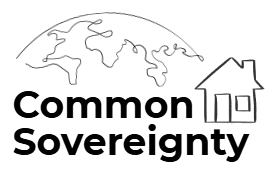The Common Sovereignty Approach
Common Sovereignty uses a five-phase methodology that supports hard-to-reach communities across developed, emerging, and frontier markets to work together in determining how local assets and catalytic capital can meaningfully finance a single cross-border, community-to-community (C2C) solution to a shared global challenge.
The methodology itself becomes a living proposal, evolving through co-creation as long as mutual social and financial returns remain viable for communities and investors. Throughout the process, Common Sovereignty acts as the convener and intermediary, with funders supporting early-stage scoping (e.g., through a design-stage grant) that leads to an investable blended finance structure. Evidence generated from the financed solution helps amplifiers and policymakers shape global markets, norms, and commitments that are more responsive to local context and community agency.
Below is how Common Sovereignty bridges locally led development and global systems reform, with community-based assets and catalytic capital as the enabling force:
